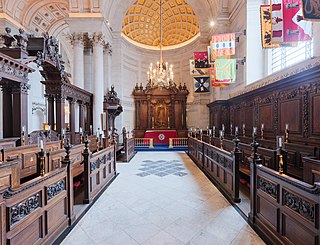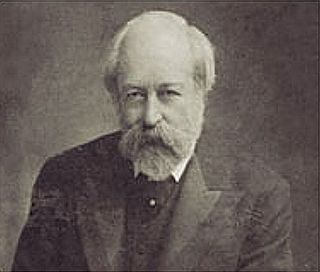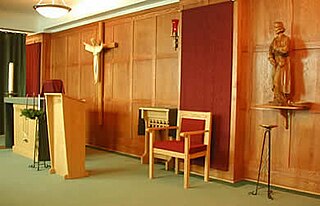
Somerville College, a constituent college of the University of Oxford in England, was founded in 1879 as Somerville Hall, one of its first two women's colleges. Among its alumnae have been Margaret Thatcher, Indira Gandhi, Dorothy Hodgkin, Iris Murdoch, Vera Brittain and Dorothy L. Sayers. It began admitting men in 1994. Its library is one of Oxford's largest college libraries. The college's liberal tone derives from its founding by social liberals, as Oxford's first non-denominational college for women, unlike the Anglican Lady Margaret Hall, the other to open that year. In 1964, it was among the first to cease locking up at night to stop students staying out late. No gowns are worn at formal halls.

Mansfield College, Oxford is one of the constituent colleges of the University of Oxford in Oxford, England. The college was founded in Birmingham in 1838 as a college for Nonconformist students. It moved to Oxford in 1886 and was renamed Mansfield College after George Mansfield and his sister Elizabeth. In 1995 a royal charter was awarded giving the institution full college status. The college grounds are located on Mansfield Road, near the centre of Oxford.

New College is one of the constituent colleges of the University of Oxford in the United Kingdom. Founded in 1379 by William of Wykeham in conjunction with Winchester College as its feeder school, New College was one of the first colleges in the university to admit and tutor undergraduate students.

Oriel College is a constituent college of the University of Oxford in Oxford, England. Located in Oriel Square, the college has the distinction of being the oldest royal foundation in Oxford. In recognition of this royal connection, the college has also been historically known as King's College and King's Hall. The reigning monarch of the United Kingdom is the official visitor of the college.

Trinity College is one of the constituent colleges of the University of Oxford in England. The college was founded in 1555 by Sir Thomas Pope, on land previously occupied by Durham College, home to Benedictine monks from Durham Cathedral.

A chapel is a Christian place of prayer and worship that is usually relatively small. The term has several meanings. First, smaller spaces inside a church that have their own altar are often called chapels; the Lady chapel is a common type of these. Second, a chapel is a place of worship, sometimes non-denominational, that is part of a building, complex, or vessel with some other main purpose, such as a school, college, hospital, palace or large aristocratic house, castle, barracks, prison, funeral home, cemetery, airport, or a military or commercial ship. Third, chapels are small places of worship, built as satellite sites by a church or monastery, for example in remote areas; these are often called a chapel of ease. A feature of all these types is that often no clergy were permanently resident or specifically attached to the chapel.

Girton College is one of the 31 constituent colleges of the University of Cambridge. The college was established in 1869 by Emily Davies and Barbara Bodichon as the first women's college in Cambridge. In 1948, it was granted full college status by the university, marking the official admittance of women to the university. In 1976, it was the first Cambridge women's college to become coeducational.

George Frederick Bodley was an English Gothic Revival architect. He was a pupil of Sir George Gilbert Scott, and worked in partnership with Thomas Garner for much of his career. He was one of the founders of Watts & Co.

King's Chapel is an American independent Christian unitarian congregation affiliated with the Unitarian Universalist Association that is "unitarian Christian in theology, Anglican in worship, and congregational in governance." It is housed in what was for a time after the Revolution called the "Stone Chapel", an 18th-century structure at the corner of Tremont Street and School Street in Boston, Massachusetts. The chapel building, completed in 1754, is one of the finest designs of the noted colonial architect Peter Harrison, and was designated a National Historic Landmark in 1960 for its architectural significance. The congregation has worshipped according to a Unitarian version of the Book of Common Prayer since 1785, currently in its ninth edition.


The Cathedral of Saint Mary of the See, better known as Seville Cathedral, is a Roman Catholic cathedral in Seville, Andalusia, Spain. It was registered in 1987 by UNESCO as a World Heritage Site, along with the adjoining Alcázar palace complex and the General Archive of the Indies. It is one of the largest churches in the world as well as the largest Gothic church.
Anglican Marian theology is the summation of the doctrines and beliefs of Anglicanism concerning Mary, mother of Jesus. As Anglicans believe that Jesus was both human and God the Son, the second Person of the Trinity, within the Anglican Communion and Continuing Anglican movement, Mary is accorded honour as the theotokos, a Koiné Greek term that means "God-bearer" or "one who gives birth to God".

The Princeton University Chapel is located on that university's main campus in Princeton, New Jersey, United States. It replaces an older chapel that burned down in 1920. Designed in 1921 by Ralph Adams Cram in his signature Collegiate Gothic style, it was built by the university between 1924 and 1928 at a cost of $2.3 million. The chapel was rededicated in an interfaith ceremony in 2002 following a major two-year restoration.

St Paul's Church is a Church of England parish church located on St Paul's Square in Bedford, Bedfordshire, England. Formerly a medieval collegiate church, the large building of cathedral proportions with its later additions and iconic spire dominates the town. St Paul's is the largest Anglican church in Bedfordshire, and the church exercises a ministry of welcome to thousands of visitors and pilgrims from far and wide each year. St Paul's is officially recognised as a Major Parish Church and is a member of the Major Churches Network.

Merton College Chapel is the church of Merton College, Oxford, England. Dedicated to St Mary and St John the Baptist, the chapel was largely completed in its present form by the end of the 13th century. The building retains a number of original stained glass windows, and is noted for its acoustics. A choral foundation was established in 2008 by Peter Phillips.

In 2013, the Royal Military College of Canada is celebrating the 50th anniversary of the two small devotional chapels in Yeo Hall, which were installed in 1963. With a view to encourage and enhance their spiritual well-being, the Protestant and Royal Catholic Chaplains, cadets and staff use the Chapels. Gifts to the chapels have been made by successive generations of cadets and ex-cadets.

The British Muslim Heritage Centre, formerly the GMB National College, College Road, Whalley Range, Manchester, is an early Gothic Revival building. The centre was designated a Grade II* listed building on 3 October 1974.

St John the Evangelist's Church is a Grade I listed Church of England parish church dedicated to John the Evangelist, in Corby Glen, Lincolnshire, England. The church is 9 miles (14 km) south-east of Grantham, and in the South Kesteven Lincolnshire Vales. It is noted in particular for its 14th- and 15th-century medieval wall paintings.

Emily Georgiana Kemp (1860–1939) was a British adventurer, artist and writer. She was awarded the Grande Médaille de Vermeil by the French Geographical Society for her 1921 work Chinese Mettle.




























